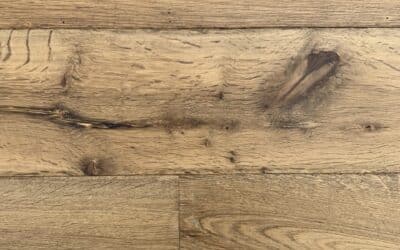Engineered timber flooring is a relatively new type of flooring that has gained popularity in recent years. Here is a brief overview of the history and evolution of engineered timber flooring:
- Early history: The concept of engineered wood dates back to the 19th century, when it was first used in the construction of ships and airplanes. However, it was not until the 20th century that the idea of using engineered wood for flooring began to emerge.
- Introduction of plywood: In the 1930s, the first types of engineered wood flooring, known as plywood, were introduced. Plywood was made from thin layers of wood that were glued together in a cross-laminate configuration, which made it more stable than solid wood.
- Development of parquet flooring: In the 1950s and 1960s, parquet flooring, which was made from small pieces of wood arranged in a geometric pattern, became popular. Parquet flooring was often made from engineered wood, as it was more stable and easier to install than solid wood.
- Advancements in manufacturing: In the 1980s and 1990s, advancements in manufacturing technology led to the development of new types of engineered wood flooring, such as laminate flooring and floating wood floors. These products were made from a combination of wood and synthetic materials, which made them more affordable and easier to install than traditional wood flooring.
- Today’s high‑quality engineered floors are layered and bonded under pressure—made to stay flat and stable in real homes. Improvements since the 1980s mean they’re now easier to fit, more reliable and available in a wider array of looks.
Overall, the history of engineered timber flooring has been one of continuous innovation and improvement, leading to the high-quality, versatile flooring products that are available on the market today.


